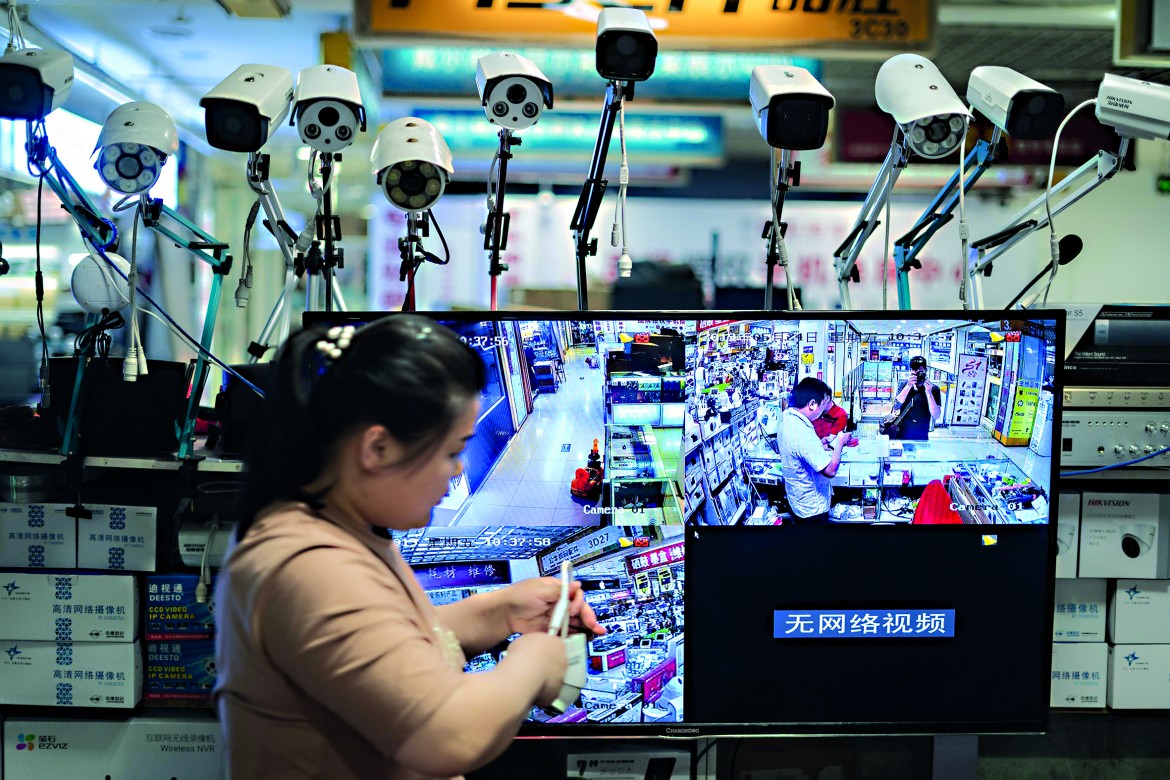Analysis
The Chinese Panopticon, from cybernetics to social credit
With new face surveillance and social controls, the Chinese Communist Party is finally implementing tech-driven policies decades in the making.

The recent controversy over the measures of repression and social control implemented by the Chinese Communist Party in the northwestern region of Xinjiang against the Uyghur Turkic-speaking Muslim minority has reopened the debate on the Chinese “surveillance state.”
Today, China has quite a few weapons at its disposal which can help it achieve total control over its population over time. This is a potentiality that has become real thanks to the great technological transformation of the country (leading to Beijing’s extraordinary new capabilities to collect biometric data), in combination with a focus on social order and control that is a traditional feature of Chinese history.
The system consisting of social credits (a set of “models” for verifying the “trustworthiness” of people by associating them with an individual score and blacklists), hyper-controlled smart cities and the capabilities made available by artificial intelligence and Big Data recalls a number of features from Chinese imperial history, but its development effectively began 40 years ago.
The current evolution is an acceleration of a policy line which the Communist Party has been pursuing for a very long time. The origin of today’s Chinese Panopticon lies in the ‘70s and in the development of cybernetics. In simple terms, cybernetics is the science that studies control and communication between humans and machines. The mathematician Norbert Wiener is usually hailed as the one who pioneered this scientific field, with his book Cybernetic published in 1948.
The “Chinese Wiener” was Qian Xuesen, considered the father of the Chinese missile development program, among other achievements. Today, Qian is a kind of national hero. He was a leading scientist in the United States, and was persecuted during the McCarthy era because he was accused of Communist sympathies.
In 1954, Qian published Engineering Cybernetics: he and other Chinese scientists were responsible for the first development of social engineering models which, as implemented over time by the Communist Party, have merged into what is known as the Golden Project, a project for the total organization of society on the basis of engineering, some of whose features have recently become reality.
Smart cities and the social credit system are two examples, as is the race for artificial intelligence and the use of Big Data. The new technologies allow China to plan for a practical implementation of what Qian had outlined, through the impulse to divide spaces and people in order to allow better control by the authorities.
A more recent example of progress on this path came in 2002, when China developed a new conception of police work: in Shanghai, local agents were tasked with collecting information thanks to a system that divided the urban space into “grids,” with the grid cells assigned to different “managers” able to provide faster answers and obtain as much detailed information as possible within a more limited space. We are left to imagine the potential of such a system today, with the power of video cameras and facial recognition.
Much attention has been paid to the role of information flows. A part of the Golden Project is the Golden Shield project, which, according to Rogeer Creemers in his article China’s Social Credit System: An Evolving Practice of Control, “deserves particular attention,” because it is a “programme to create a national infrastructure within the police and internal security bureaucracy, which has rapidly become ever more potent in recent years, accruing better technological, analysis and management capabilities.”
In a line running through the leadership of Jiang Zemin and Hu Jintao before arriving at Xi Jinping, the Communist Party has continued to develop social engineering plans, of which the “social credit system” is only one of many aspects.
It is also for this reason that we should not limit ourselves to highlighting only the features that appear particularly dystopian in our eyes, and see them as part of a larger context, even if at that point everything might appear even more disturbing than a simple parallel between China and episodes of Black Mirror.
It appears that the social credit system aims to create a society based on trust, in which the definition of “virtuous” and “moral” is decided by the Communist Party alone; in the next step, this will lead to a “social grid” established through smart cities, which in turn will be governed according to social criteria, through social credits and technological capabilities that allow for continuous data collection and processing.
As Samantha Hoffmann writes in Managing the State: Social Credit, Surveillance and the CCP’s Plan for China, “In the construction of the social credit system, current research and development is largely focused on areas such as big data analysis and integration to support the collection of information and ensure its effective use for intelligence. This is one of many areas where advances in artificial intelligence would help streamline social management processes and, perhaps ideally, even automate them.”
Originally published at https://ilmanifesto.it/cina-cibernetica-ai-crediti-sociali-il-panopticon-cinese/ on 2019-12-01
